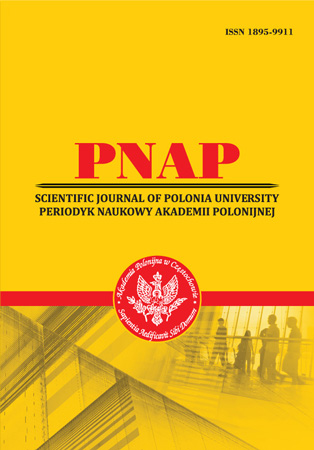THE ‘AVAILABILITY HEURISTIC’ COGNITIVE PATTERN IN THE WAR-TIME UKRAINIAN HUMOROUS DISCOURSE
Abstract
The article analyses the functioning of the war-time Ukrainian Humorous discourse in general and the ‘Availability Heuristic’cognitive pattern, as a variant of the ‘Heuristic analogy’ cognitive pattern in particular.’ The purpose of the research is to determine the role of this cognitive pattern in the creation of the comic effect in the war-time verbal humor in Ukraine. The paper presents the results of the stylistic and cognitive analyses of twelve Ukrainian wartime jokes where the ‘Availability heuristic’ cognitive pattern was manifested. On the one hand, the study determined that the researched war-time Ukrainian humorous discourse has the features of the main humor theories, including the psychological tension relief and the superiority theories, the incongruity and the reframing theories. Besides, the conducted research exposes the fact that this cognitive pattern plays an essential role in selecting stylistic humor mechanisms, while processing the in-coming information and shaping the cognitive frameworks of humor perception and creation. According to this research, the ‘Availability Heuristic’cognitive pattern manifests through such main stylistic figures as paraprosdokian, irony and pastiche in its narrow meaning. It could be accompanied by the ‘Distinct contrast’ cognitive pattern, the ‘Superiority or Illusionary Superiority’ cognitive pattern and the cognitive ‘Easel pattern,’ responsible for the dominance of visual pictures and images. The researched Ukrainian jokes are interwoven with the situational context of the dramatic events within a temporality of the speedy streaming news of the Russian-Ukrainian war.
References
2. Bandler R. (1983) Reframing: NLP And The Transformation Of Meaning.Washington: Real People Press. 208 p.
3. Baraban A. (2022). The new Ukrainian school is when money is collected not for curtains, but for "Bayraktary": funny jokes to spite the day https://telegraf.com.ua/ukr/anekdots/2022-07-22/5711288-novaya-ukrainskaya-shkola-eto-kogda-dengi-sobirayut-ne-na-shtory-a-na-bayraktary-smeshnye-prikoly-na-zlobu-dnya
4. Bardon A.(2005). The Philosophy of Humor In Comedy: A Geographic and Historical Guide, 2 vols. edited by M. Charney, 462–476, Westport, CT: Praeger.
5. Billing, M. (2005). Laughter and ridicule: Towards a social critique humor. London: SAGE Publications. 272 p.
6. Gleason, C. (2021, Nov 03). Availability Heuristic and Decision Making. Simply Psychology. www.simplypsychology.org/availability-heuristic.html
7. Goldman, N. (2013). Comedy and democracy: The role of humor in social justice. Animating Democracy, 1-10 pp.
8. Gornostal M. (2022) Russian troops "of good will" left Zmiinyi Island: a selection of memes © https://gloss.ua/ua/lifestyle/138228-vijska-rosiji-z-dobroji-voli-pishli-z-ostrova-zmijinij-dobirka-memov
9. Hobbs T. (1958) Levithan. Parts One and Two. New York: The library of liberal Arts, 310 p.
10. Jokes in Ukrainian. Facebook. (2022). Jokes in Ukrainian. https://www.facebook.com/groups/UkrZharty/media
11. Kahneman D. A. (1982) Judgment Under Uncertainty: Heuristics and Biases. Daniel Kahneman, P. Slovic, A. Tversky. New York: Cambridge University Press. 556 p.
12. Karmazina T. (2022) If someone laid an eye on our lands, then this eye is superfluous! New jokes to spite the day. https://telegraf.com.ua/ukr/anekdots/2022-06-30/5709234-yakshcho-khtos-poklav-oko-na-nashi-zemli-znachit-tse-oko-zayve-novi-anekdoti-na-zlobu-dnya
13. Kharchenko O.V. (2014). The comic phenomenon in the communicative space of the USA. Monograph. K.: MP Lesya, 460 p.
14. Krutogolov Y. (2022). Wartime humor. https://focus.ua/uk/culture/ (August, 30, 2022)
15. Kuipers, G. (2009). Humor styles and symbolic boundaries. Journal of Literary Theory 3(2), 219-240.
16. Levkovych M. (2022). 50 shades of positive. facebook.com
17. Malphurs, R. A. (2010). People did sometimes stick things in my underwear: The function of laughter at the U. S. Supreme court. Communication Law Review 10(2), 48-75.
18. Morreall J. (2013). Philosophy of Humor. The Stanford Encyclopedia of Philosophy, edited by E. N. Zalta http://plato.stanford.edu/archives/spr2013/entries/humor/.
19. Novosti-n. (2022). Vacancy that Ukrainians have been waiting for a long time: HIMARS operator…: new funny jokes to spite the day. https://novosti-n.org/ukraine/read/293668.html
20. Ödmark S. (2018). When Small State Comedians Frame the News: The Agenda-Setting of Political Humor. In: 30th ISHS Conference Humour: Positively (?) Transforming: Book Of Abstracts / [ed] Liisi Laineste and Anastasiya Fiadotava, https://www.diva-portal.org/smash/record.jsf?pid=diva2%3A1273674&dswid=-8774
21. Paivio A.(1971) Imagery and verbal processes. N. Y.: Holt, Rinehart & Winston. 1971. 312 p.
22. Persha.kr. The first electronic newspaper. Facebook. (September 3, 2022) https://www.facebook.com/persha.kr/photos/
23. Raskin V. (1985). The Semantic Mechanisms of Humor. Reidel: Dordrecht. 280 p.
24. Robert C., Wilbanks J.E. (2012). The Wheel Model of humor: Humor events and affect in organizations. https://journals.sagepub.com/doi/10.1177/0018726711433133
25. Samokhina V.A. (2008) Modern English joke. Monograph. Kharkov: V.I. Karazin Kharkiv National University. 320 p.
26. Ukrainа Moloda (2022). Jokes about Lend Lease. https://www.umoloda.kiev.ua/number/3814/119/168216/
27. Terion J, Ashforth J.(2002). From ‘I’ to ‘we’: The role of putdown humor and identity in the development of a temporary group. Human Relations 55(1): 55–88.
28. Ukrinform (2022). Children of War. https://www.ukrinform.ua/rubric-ato/3554937-vidpovnomasstabnogo-vtorgnenna-rf-v-ukraini-postrazdali-1-094-ditini.html.
29. Vaina L, Hintikka J. (eds.) (1994) Cognitive Constraints on Communication: Representations and Processes. Dordrecht: Boston. 245 p.
30. Viereck G.S. (1929). The Saturday Evening Post, What Life Means to Einstein: An Interview by George Sylvester Viereck, Start Page 17, Quote Page 117, Column 1, Saturday Evening Post Society, Indianapolis, Indiana.
31. Wilson D., Sperber D. (1986). Inference and implicature. Meaning and Interpretation. Oxford, 43-75 pp.
32. Wikipedia. Russian warship, go f**k yourself. (2022). https://en.wikipedia.org/wiki/Russian_warship,_go_fuck_yourself
33. Zotenko R. (2022) Ukrainian jokes about the war. https://rozdil.lviv.ua/anekdot
Abstract views: 373 PDF Downloads: 231







